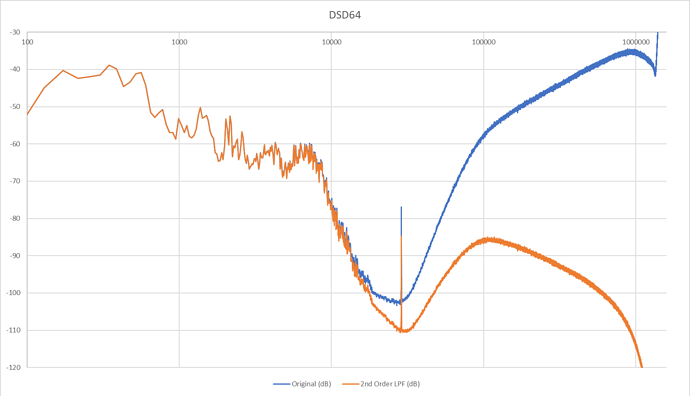Having the license to copy the master tape to digital files for vinyl release does not give you a license to sell the file. Also, SACD is DSD64, not DSD256/512
Ah really, apologies, didn’t know it was limited to 64.
I think it’s laughable that the vinyl-phile community is in such an uproar over this. It’s interesting that back in the late '70s and early '80s, before CDs took over the world of music audio, many of the best audiophile albums were made using Soundstream digital and similar recording methods to make the master which was then used to make the vinyl disc. These albums, along with direct-to-disc recordings, were considered to be the ultimate in sound quality. But nowadays, all things digital seem to be an anathema. I have no idea why.
People are in uproar over the false advertising.
Whether analogue sounds better than digital is another debate.
“Limited” is relative. You could argue that DSD512 is limited compared to DSD2048.
It is limited. In that the limitation of the SACD format is DSD 64.
Yes there were a limited number of digital recordings released on vinyl in the late 1970s and early 1980s but I believe that the switch to all digital recordings didn’t occur until sometime in the 1990s. Now almost all new recordings are digital, as are most “master tapes”.
The controversy is a result of buying a reissue of an LP originally recorded in analog and getting an LP mastered from a digital master and not the analog master. Personally, if it’s new vinyl then there is bound to be some digital involved. If one want all analog vinyl, then used is only way to go.
I am sure glad I don’t have vinyl anymore. This is new on the MoFi web site:
This “revelation” does not bother me at all. You could not do the “One-Step” process very easily with converting the original master recording to DSD256. Most labels would never let you use the master tapes every time a new “Positive” were required to complete the run.
I have listened to many of these “One-Step” vinyl discs at friends houses and many are the best vinyl releases of an album I have heard. I am glad MoFi is being more clear and about the processes they use. They should have done that from the beginning. But, knowing the vinyl crowd as I do, they never would have accepted the process if the use of DSD256 had been made clear from the beginning. This might kill their vinyl business…but I hope it does not. Converting analog master tapes to DSD256 is a smart thing to do.
So “Quad DSD256” is DSD1024, right?
Blue Note and Acoustic Sounds stated this week that only “analog” is used with their recent reissues.
Joe Harley, Kevin Grey (for Blue Note) and Chad Kassem (for Acoustic Sounds) confirmed it.
This is silly.
DSD64 (SACD) has flat bandwidth to approx 20kHz. But needs pretty aggressive analogue stage filtering.
DSD128 better because it means analogue stage filtering can be less aggressive. The ‘sweet spot’ is often (not always) somewhere between DSD128 and DSD256, depending on the converter electronics design.
Don’t need DSD2048 recordings.
For archiving purposes, DSD256 much better than DSD64, assuming they are using a good converter not a broken one.
SACD spec recommends a 50kHz low-pass filter. That doesn’t seem aggressive to me.
Yeah you need to look at real world measurements though (the reality). Look at the ultrasonic noise.
Not looking at just theory.
If you haven’t designed a converter or seen measurements, that is to be expected.
Quad DSD is DSD256….
Where was “Quad DSD256” written anywhere here?
In the picture.
Yeh, that’s Mo-Fi’s website pic… I don’t think that’s a transparent source of information right now ![]()
In the picture below, the blue line is the spectrum of an original DSD64 track from an SACD. There is indeed a lot of ultrasonic noise, but it’s below -80dB at 50kHz. The orange line shows the result after applying a second-order (-12dB/octave) 20kHz low-pass filter. That is relaxed enough, easy to realize in the analog domain (e.g. passive RLC filter) and the remaining ultrasonic noise (which peaks at -85dB around 100kHz) won’t blow up any speakers. Of course you can do better, but it won’t be nearly as aggressive as a brick-wall.
Well I have no idea where that is from and like I originally mentioned, it will vary depending on converter.
There are converters now recording at DSD128 and DSD256 that push this noise higher and the orange curve can be even lower in level.
If the tech already exists, for archiving purposes, why would you still stick with DSD64?
And main point was the DSD512 to DSD2048 you originally mentioned - that is an irrelevant example.
Track 4, “People Are Strange” on this:
Doors, The - The Best Of The Doors - Amazon.com Music
We can always make it lower, no matter how low it is already.
You told me to look at real-world measurements. I obliged.



